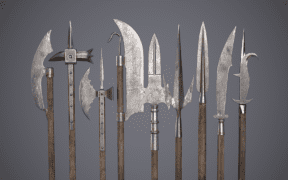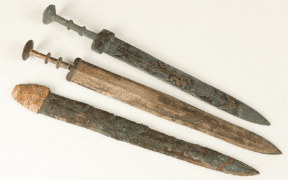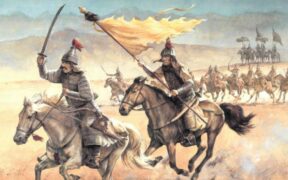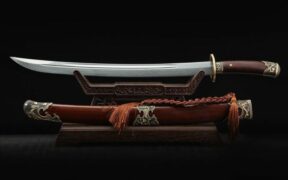12 Iconic Types of Chinese Spears That Shaped History
NO AI USED This Article has been written and edited by our team with no help of the AI
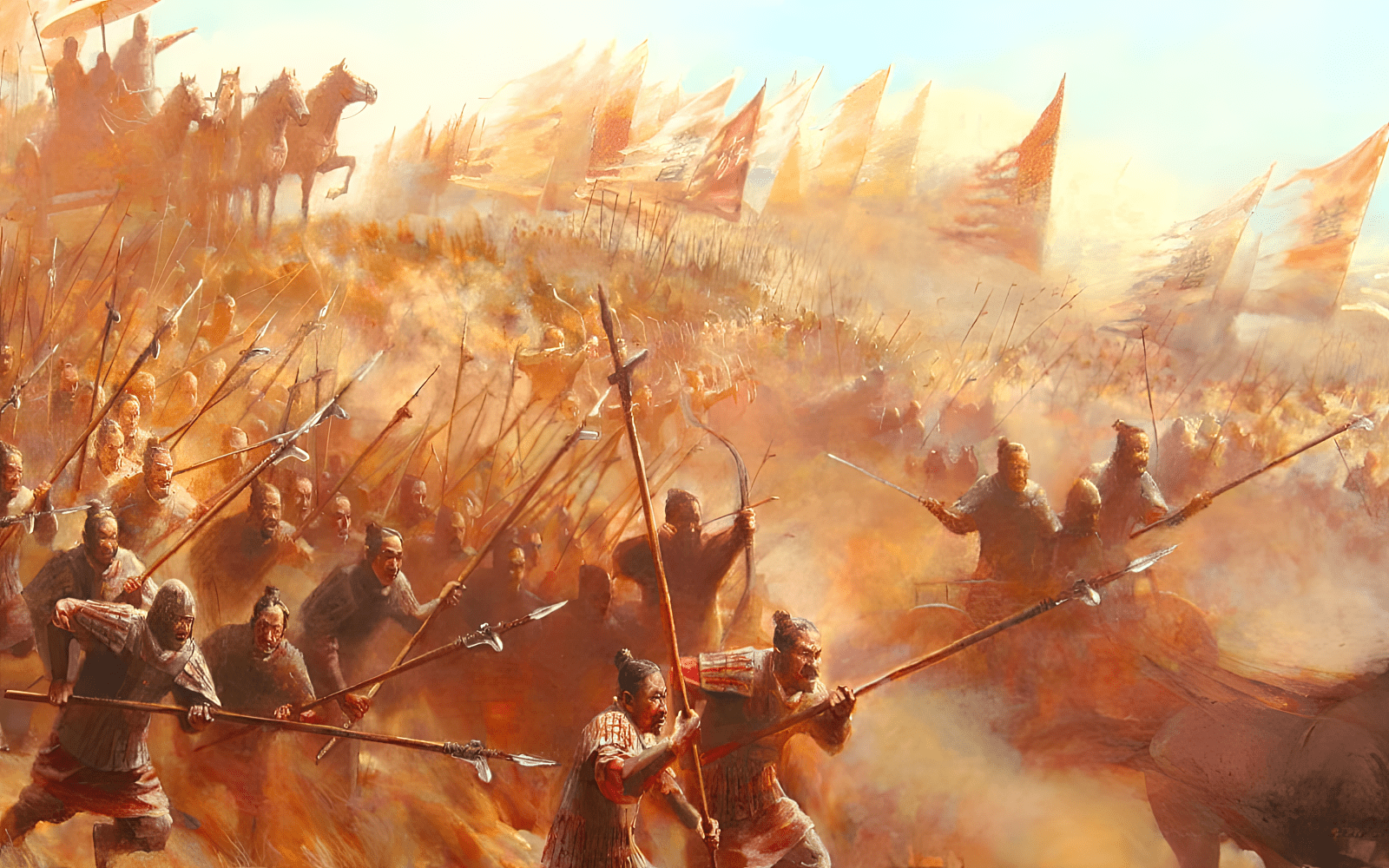
The qiang (槍) Chinese spear is an iconic weapon that has varied in shape and design throughout history. It featured a long shaft with nimble weight and a tip made for thrusting, sometimes accompanied by other blade prongs.
It is known as “The King of Weapons” and was central Chinese warfare alongside 18 other weapons, such as the legendary dagger axes known as ge (戈) and the ji (戟) halberds.
An old Chinese martial art saying (that can be interpreted differently) says, “It takes 100 days of bare hand, 1000 days of spear, and 10000 days of sword.” The saying refers to the short training time needed for the spear to turn an untrained farmer into a valued asset in battle.
This article will list Chinese melee weapons with spearheaded tips used for thrusting from a European perspective.
Chinese Spearhead Characteristics
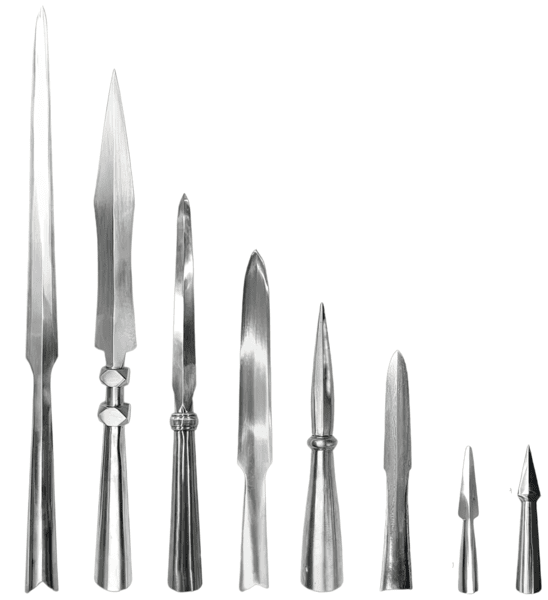
In Chinese history, spearheads evolved in different shapes and sizes to better deal with contemporary enemies. Some were heavy for direct impact on a heavy target, while others were light and mounted on long shafts.
Below are some spearhead designs presented in the photo above, in chronological order from left to right of the image above.
- Cavalry Swallow Tail
- Gourd Shaped
- Military Standard
- Swallow Tail
- 8-Sided End Cap
- Compact Swallow Tail
- Duck Tounge
- Long Spear
Chinese spears varied in shape, such as being pointed or leaf-shaped. The number of edges also varied, and the spear could be accompanied by several hooks.
1. Qiang
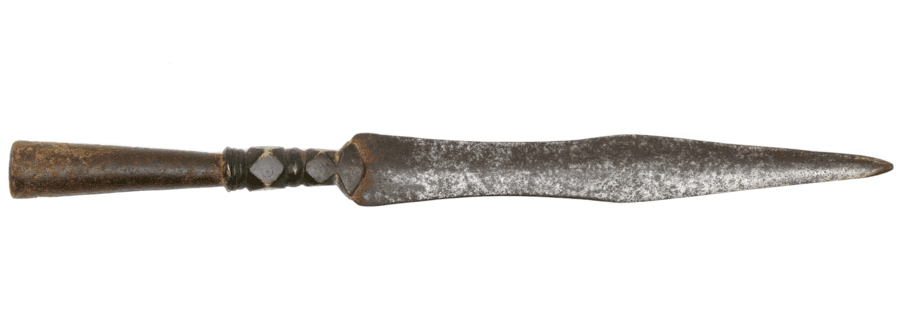
The ancient prototype version of the Chinese spear is known as qiang or mao, with surviving examples dating back to the Shang Dynasty (17th-11th century BCE).
Instead of the popular contemporary dagger axe used as a spike, the mao or qiang often featured just the spearhead.
The initial ancient spears were made from bronze, which eventually turned into iron and steel. Due to its effectiveness, its shape was replicated with variations throughout history.
It has a double-edged blade tapered to a point, ideal for stabbing, mounted on a hard and flexible wooden or bamboo shaft.
2. Shu
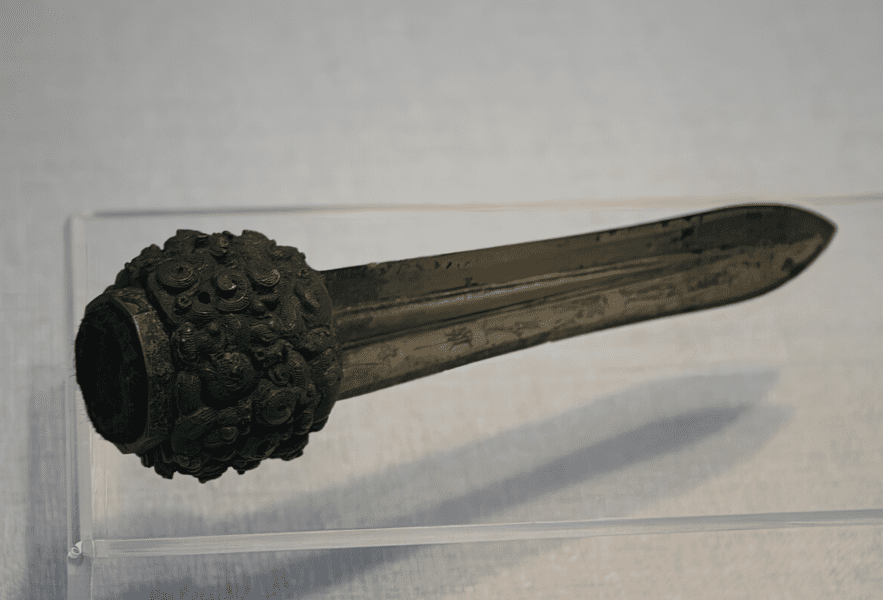
Shu spears came in two variations: a longer and slimmer version or a shorter and thicker one. These spears had octagonal shafts that were heavier than a regular qiang due to the size of their spearheads.
The spearhead could be made of bronze and eventually perfected with iron and steel. It had different cross sections, one of which featured a three-edged octagonal, broad shape ending in an acute tip.
Some had an ancient mace head design sharpened like a spearhead. They were popular in ancient China, along with the dagger axe.
3. Ji
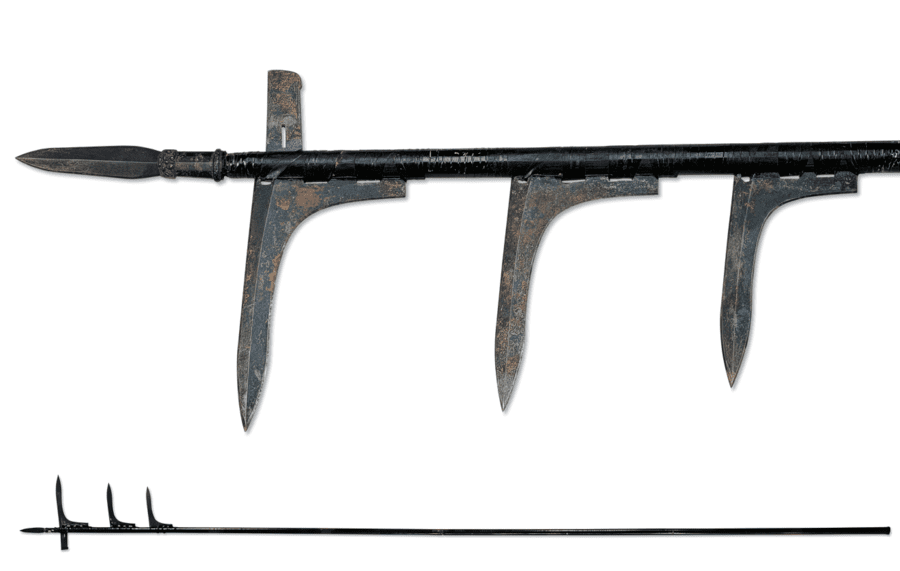
The Ji spear is a dagger axe with a pointed spearhead.
The spearhead used for thrusting replaced the earlier dagger axe used for puncturing or cutting. “The dagger axe was the standard infantry weapon in the Heartland Region from the Neolithic era to the Warring States Period,” says John Major, author of several manuscripts related to Chinese history.
Ji was very practical in ancient Chinese warfare and evolved throughout the Han Dynasty (3rd century BCE-3rd century CE). They carried similar spearheads linked together with a reinforced dagger axe or a proper axe.
4. Mao
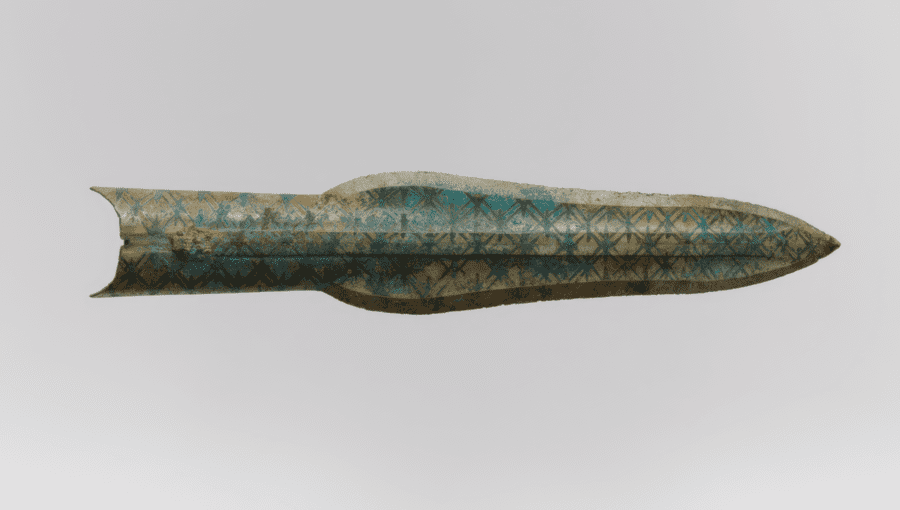
While in antiquity, mao was used to name the spear, its meaning gradually changed. The qiang became a weapon that carried a wooden shaft, both flexible and hard, holding a metal spearhead for combat.
The mao, on the other hand, became a weapon with a solid handle, sometimes made of the same material as its spearhead. These sturdy spears could make a bigger impact when thrusting the target.
5. Pi
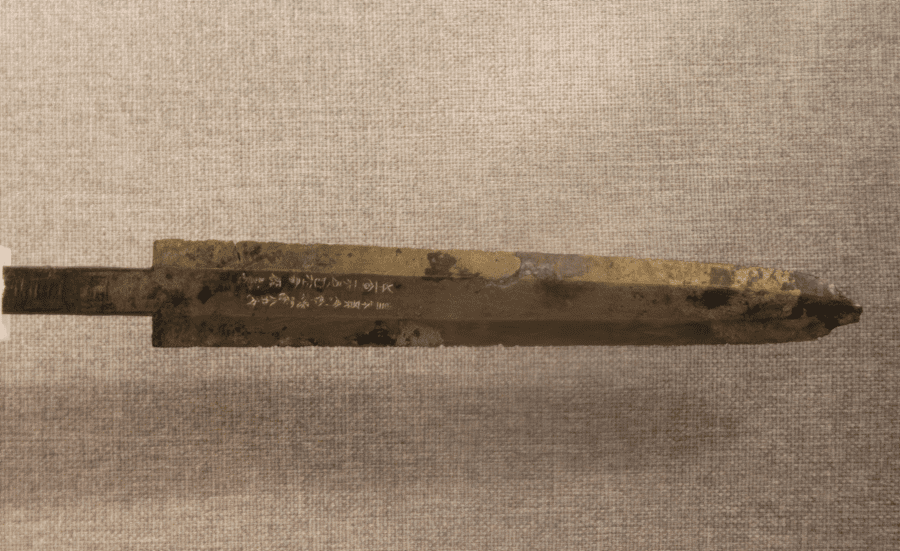
The pi is a unique type of spear that features a spearhead in the shape of a sword, which led to its nickname, “swordstaff.” The blade was mounted on a long shaft and used as a lance for powerful stabbing.
Due to their massive spearheads, these spears were slightly heavier with a long tang, making them similar to a sword. Pi spears were popular in ancient China during the Han Dynasty.
6. Sha
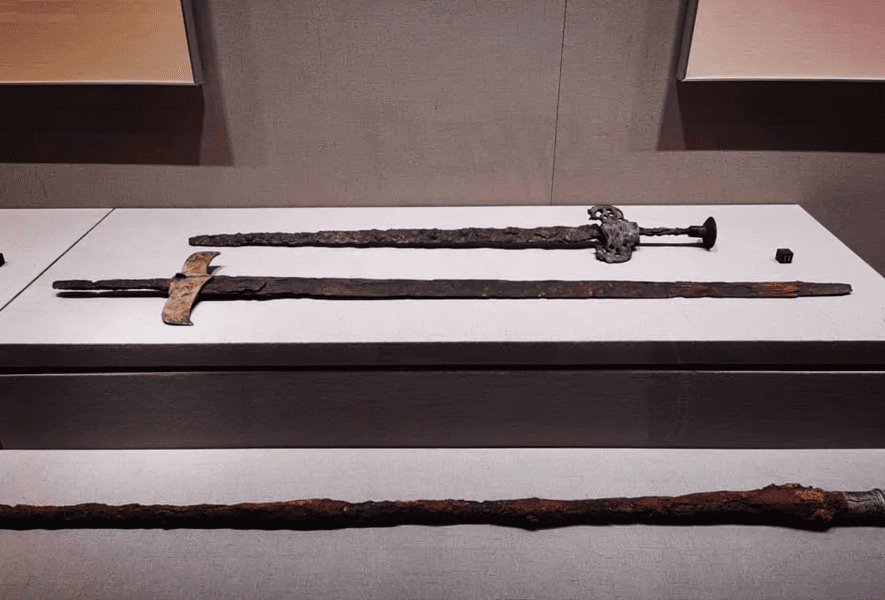
Sha spears are an improved version of the pi sword staff spear. They feature similar double-edged blades that are slimmer and longer. The extending blade prongs on either side resemble a European-style crossguard.
The sha spears were popular two-handed weapons used during the Han Dynasty. It is believed that the legendary weapon known as the Green Dragon Crescent Blade, wielded by General Guan Yu, was a sha.
Sifu Kiel, a Chinese martial arts instructor, says, “Guan Yu, being a cavalry warrior, it is safe to say that he used the sha or knew how to use the sha.”
7. Gou Lian Qiang
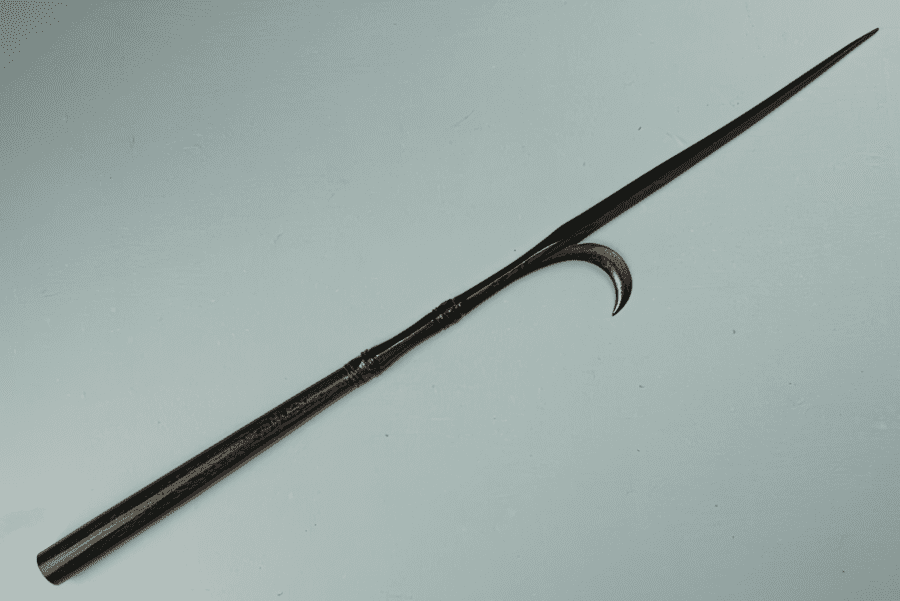
The gou lian qiang is an iconic Chinese spear featuring a standard qiang double-edged spearhead accompanied by a protruding sickle on one side.
This sickle or hook is sharpened and, although competent at puncturing attacks like the ji, was mainly intended for hooking motions against heavily armored units.
These spears were popular during and after the Song Dynasty (10th-13th century CE) due to improvements made in armor technology. Famously, they were carried by the Green Standard Army, an elite unit active during the Qing Dynasty.
8. Shuang Gou Lian Qiang
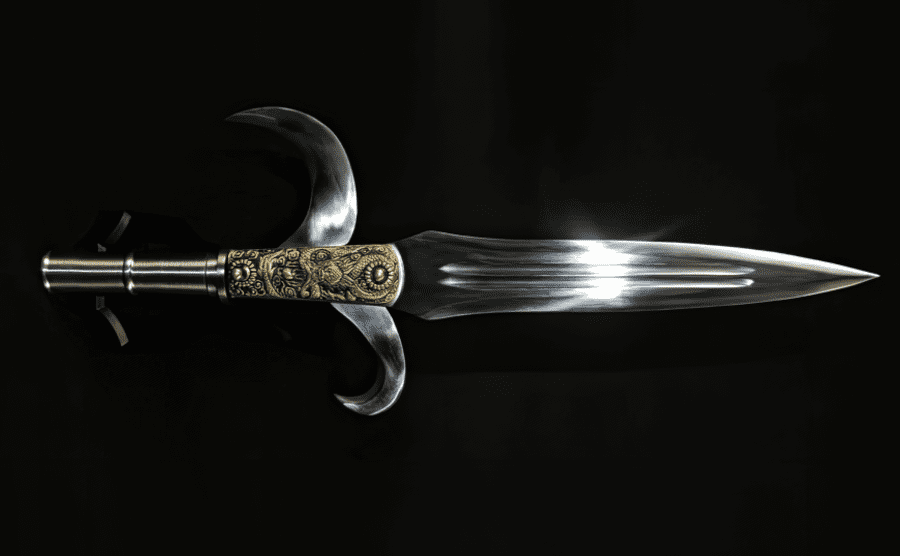
The hooking spear varied in design, and those with two protruding hooks were known as shuang gou lian qiang. The hooks were positioned on either side of the spearhead and could be used for puncturing or pulling its target after entry.
10. Gou Qiang
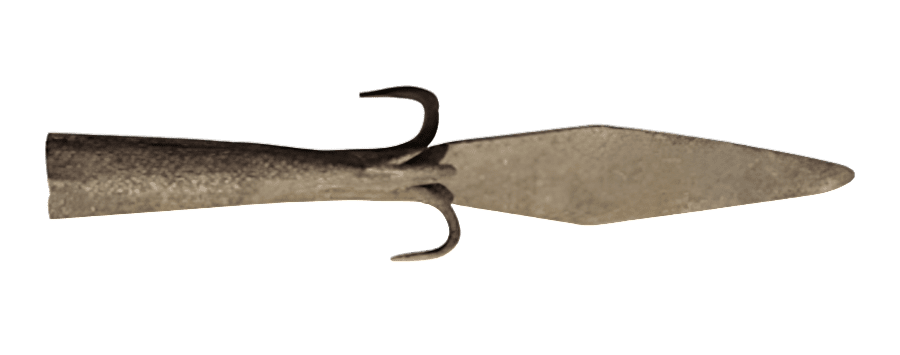
The gou qiang Chinese spear replicates the qiang style of spearhead with a broadened middle smaller hook protruding from its base. There are between two and four hooks that are usually separated from each other by the same distance.
The hooks aided in the spear’s aesthetics, making it unique, but they also provided function, such as latching on the target’s clothing or armor and effectively pulling it.
11. Hu Ya Qiang
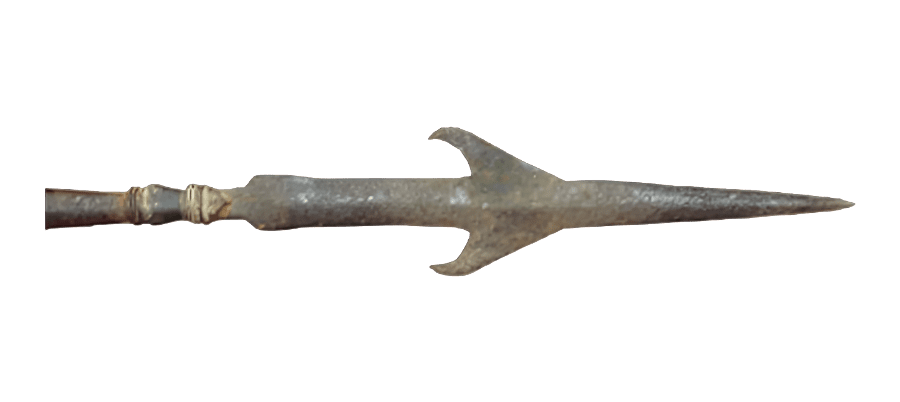
The hu ya qiang, or the tiger fang spear, is a rare Chinese spear with few surviving examples today. The spearhead features two narrow, short teeth protruding directly from the blade’s center.
Hu ya qiang teeth hook spears weren’t popular in battle. Instead, they were used during the Qing Dynasty.
12. She Mao

She mao spears are unique Chinese two-handed polearms that carry a snake-like spearhead. It curves on multiple ends, resembling the movement of a snake, with an acute tip used for piercing.
Most she mao designs can be found on Chinese ceremonial paraphernalia, indicating that these unique blades were meant for ceremonial purposes rather than combat.
12. Trident Spears
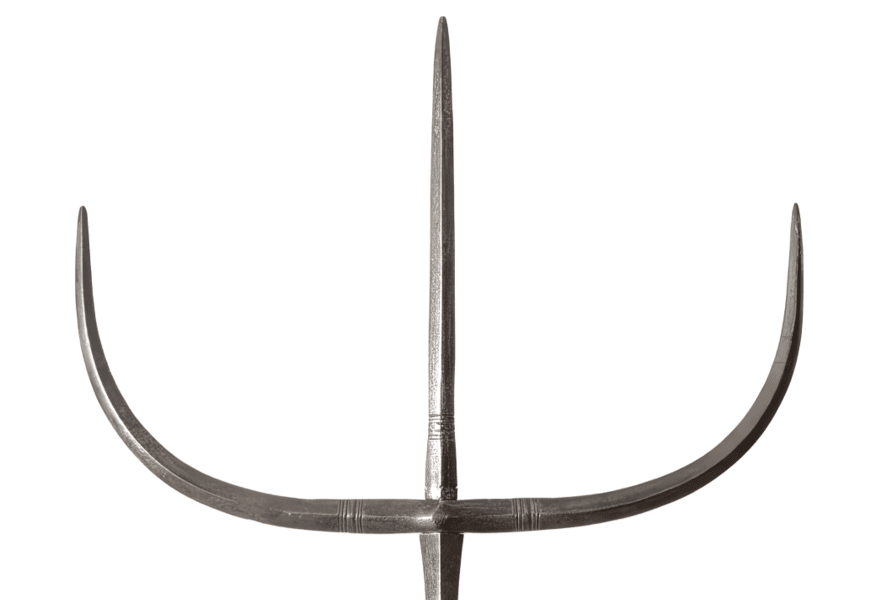
Some Chinese spears feature a traditional spearhead accompanied by various blade prongs, allowing them to function as a different weapon. Some folks do not even consider them spears.
The most popular examples are the hu cha, or tiger fork, used to fend off animals, and the tang pa and ma cha, with, spearheads in the center and two large quillons near the shaft. Another example is the wu cha, which features one quillon pointed down, and the she lian qiang, with a wavy qullion resembling a snake.
